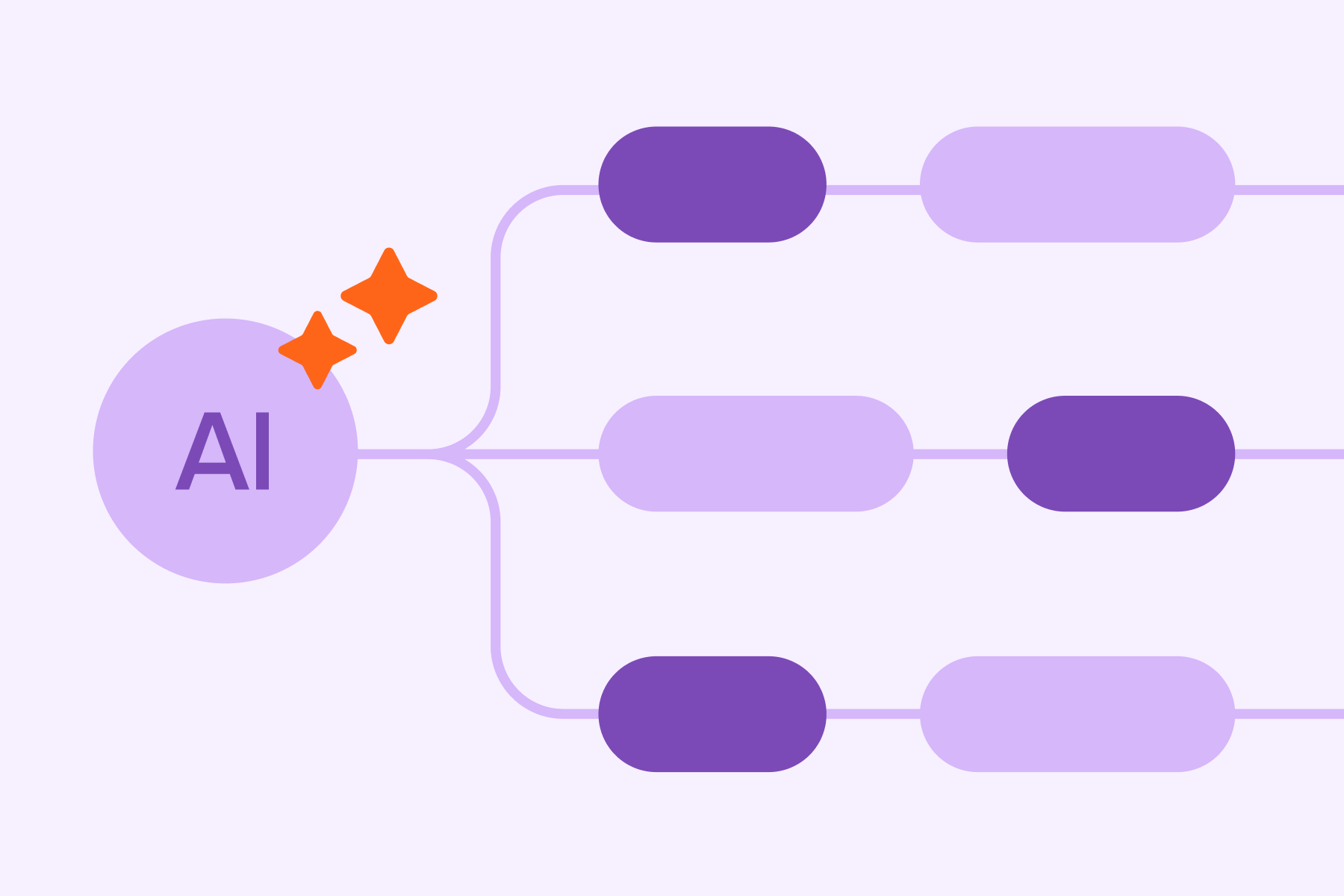15 SaaS Marketing Tools That Eliminate Manual Work and Boost ROI
Anastasiya Khvin
October 20, 2025

We've worked with dozens of SaaS companies over the years, from early-stage startups to established players like Mixpanel. The difference between companies that scale and those that stagnate usually comes down to one thing: whether they're still doing manually what should've been automated months ago.
Why Manual Marketing Efforts Are Killing Your SaaS Growth in 2025
We had a client come to us last quarter spending 20 hours a week manually compiling reports from five different platforms. Another 15 hours scheduling social posts. Their head of marketing looked exhausted.
If you're still manually doing repetitive marketing tasks in 2025, you're sabotaging your growth. While you're copy-pasting data, your competitors are running multivariate tests and actually analyzing what works.
The Evolution of SaaS Marketing Automation From Nice-to-Have to Mission-Critical
Remember when marketing automation meant setting up a basic drip email sequence? Those days are long gone.
In our work with companies like ShipBob and Orion Labs, we've seen how the right automation platform changes revenue outcomes. When we helped Orion Labs scale their paid campaigns, we increased the value of their sales opportunities by 4X by building an ecosystem of tools that talked to each other and made intelligent decisions without constant human babysitting.
The modern SaaS marketing stack isn't about replacing marketers. It's about freeing them up to do what humans do better than any algorithm: strategy, creativity, understanding the messy psychology of why someone picks your product over a competitor's.
15 SaaS Marketing Tools That Actually Eliminate Manual Work
1. HubSpot Marketing Hub
.webp)
Yes, HubSpot is expensive. Yes, it's overwhelming at first. And yes, we still recommend it for most B2B SaaS companies because it's that good. HubSpot forces your marketing and sales teams to actually communicate. The CRM is the single source of truth for your entire customer journey. When we work with SaaS companies, marketing says they're delivering quality leads, sales says the leads are garbage, and nobody has data to prove who's right.
You can track a visitor from their first anonymous website visit through every email open, every sales call, right through to closed revenue.For B2B SaaS specifically, the lead scoring capabilities are gold. Behavioral signals plus firmographic data like company size and tech stack. The reporting suite connects marketing activities to revenue with attribution reports that actually make sense. Want to know which blog posts drive the most free trial signups? HubSpot answers questions that matter for your SaaS marketing strategy, not just vanity metrics.
2. Jasper AI for Content Creation
.webp)
Tools like Jasper are changing content marketing for saas companies. We recently helped a client increase content output from 4 blog posts a month to 16 with the same team size. But the best ai tools for SaaS are only as good as your prompts and editing.
Jasper leads the pack for pure copywriting if you have the budget. Their "Boss Mode" gives you enough control to maintain brand consistency while getting the speed benefits of AI generation. Use it to generate 10 headline options in 30 seconds, repurpose webinar transcripts into blog outlines, brainstorm email subject lines at 4 PM when your brain feels like mush. But then have a real human who understands your product refine everything. The content that converts sounds like a human talking to another human, not a robot.
3. Customer.io for Behavioral Email Automation
.webp)
Customer.io is our go-to for product-led companies. Built for behavioral triggers and in-app messaging based on how users interact with your product. User didn't complete onboarding? Trigger a personalized nudge. Power user just hit a usage limit? Perfect time to pitch your upgrade.
The important bit is segmentation. Different customer segments need different messaging, pacing, and calls to action. Litmus research shows that segmented email campaigns have 14.31% higher open rates and 100.95% higher click-through rates than non-segmented campaigns. Customer.io makes this kind of sophisticated email automation actually manageable without needing a developer for every change.
4. Ahrefs for SEO and Content Strategy
.webp)
Ahrefs is the heavyweight champion for SEO. Comprehensive backlink analysis, keyword research for terms you can actually rank for, competitor analysis that reveals what content works in your space. We've helped clients build organic traffic that drives 40%+ of qualified leads using insights from Ahrefs.
The finest keyword tool won't help if you don't understand search intent. Someone searching "project managment software" is researching. Someone searching "asana vs monday pricing comparison" is ready to buy. Ahrefs helps you find both types of keywords and prioritize what to create content around. The Content Gap feature alone is worth the price, showing you keywords your competitors rank for that you don't.
5. Segment for Data Collection and Integration
.webp)
Segment collects data from all your tools and sends it wherever you need it. Your campaigns, product analytics, CRM, and data warehouse get consistent, complete data about user behavior. This is what fixes the attribution mess most SaaS companies deal with.
At Aimers, we don't guess, we track. Proper analytics separates companies that scale profitably from those burning cash on marketing that doesn't drive revenue. If you only look at last-click attribution, you might kill paid social campaigns that actually drive brand awareness. Marketing rarely fails because of low traffic, the real leak is often deeper in the funnel. We cover this in detail in our guide on 15 advanced SaaS marketing metrics you need to track.
6. Mixpanel for Product Analytics
.webp)
While Google Analytics tracks websites, Mixpanel tracks what users actually do inside your product. For SaaS companies, this is gold. You can see exactly where users drop off in your onboarding, which features correlate with upgrades, and how different user segments behave.
The funnel analysis in Mixpanel shows you precisely where you're losing potential customers. Maybe 80% of users who complete step 1 of onboarding never make it to step 2. That's actionable data. The cohort analysis helps you understand retention patterns over time. When we managed Mixpanel's paid acquisition, we increased leads while driving down cost per lead partly because their own product gave us such clear data on what was working.
7. Clearbit for Lead Enrichment
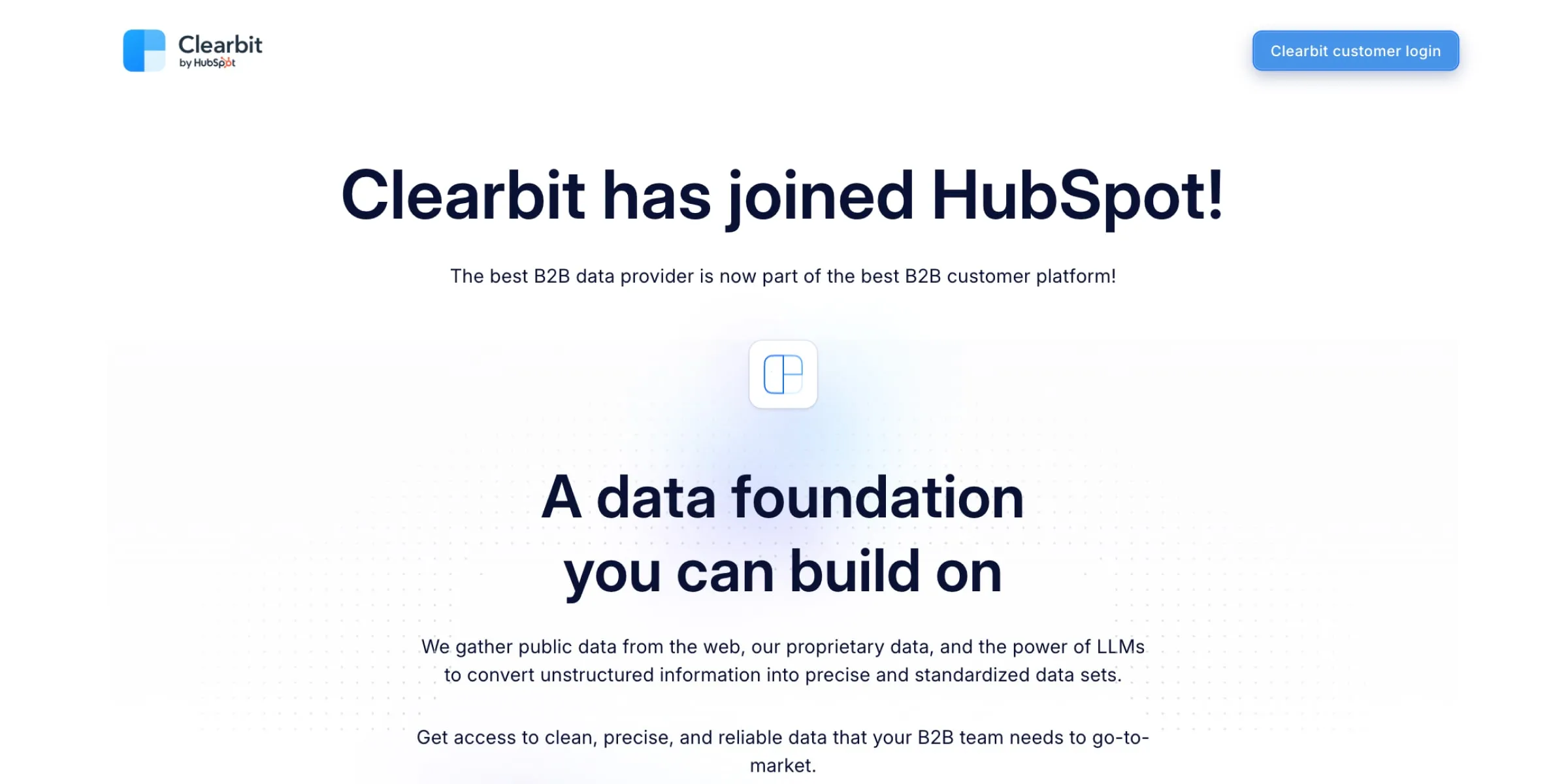
Clearbit is one of those tools most people haven't heard of but wonder how they lived without once they start using it. It automatically enriches your leads with company data (size, industry, tech stack, funding) and contact information. This means better segmentation, better targeting, better everything.
The real power is in the integrations. When someone fills out a form on your site, Clearbit instantly adds 50+ data points about their company. Your sales team stops wasting time researching prospects. Your marketing team can segment by company size or industry without asking for it in forms (shorter forms mean higher conversion rates). The ROI tracking feature even lets you see which marketing channels bring in the highest-value accounts.
8. Unbounce for Landing Page Testing
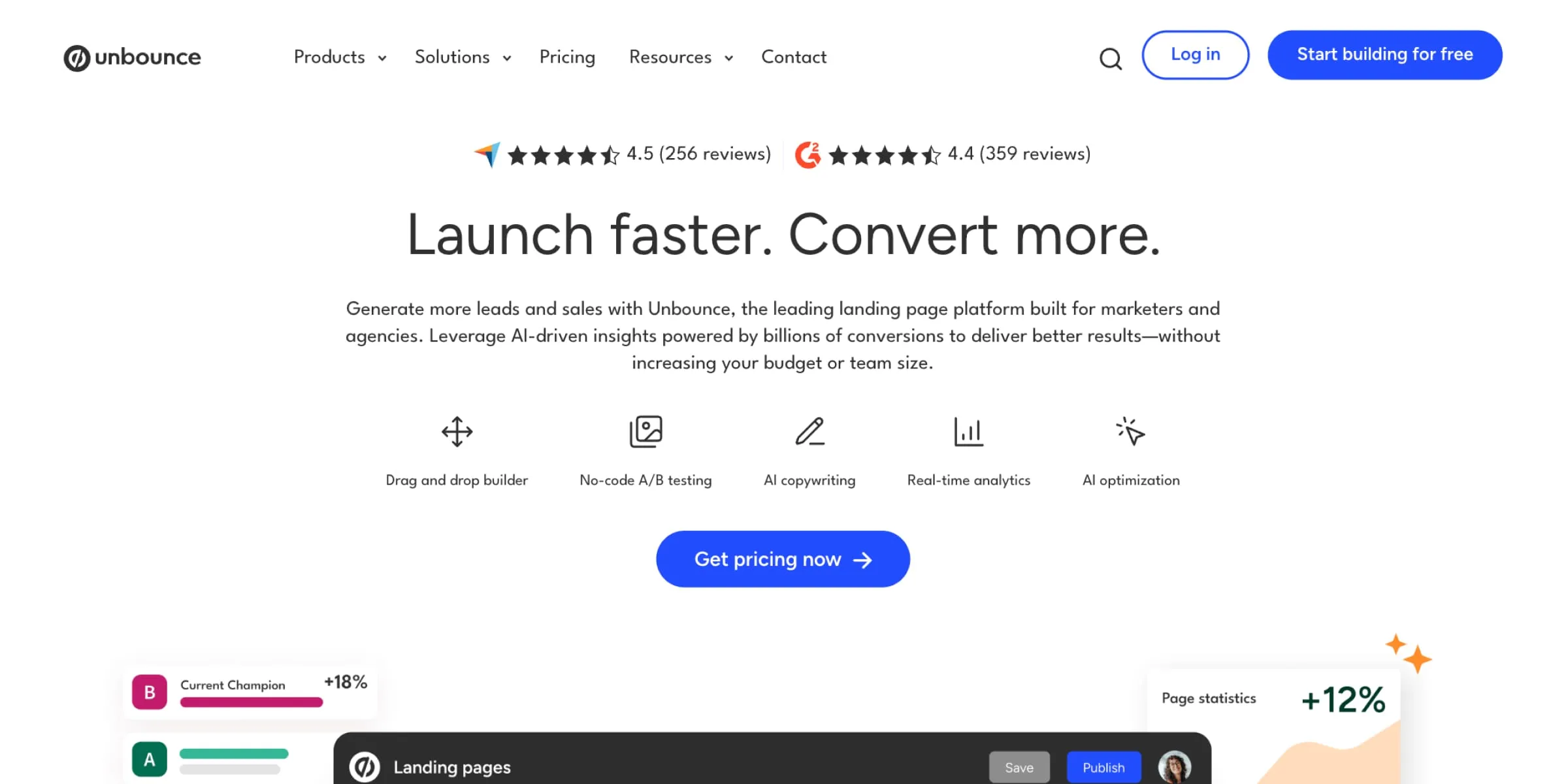
Unbounce built its reputation on landing pages, and it's still excellent. The drag-and-drop builder works, templates are conversion-focused, built-in A/B testing is straightforward. For SaaS companies running paid ads, your landing page is where money gets made or wasted.
The average landing page converts at 2-5%. The better ones convert at 15-30%. We once changed only a headline for a client, conversion rate jumped from 3.2% to 8.1%. Even the best ad campaign can't save a broken landing page. We've seen businesses spend $50,000 monthly on Google Ads driving traffic to pages converting at 1%. That's why we start with conversion rate optimization before ramping up ad spend.
9. Pendo for Product-Led Growth
.webp)
Pendo sits between marketing and product. It helps you communicate value, guide users through your product, and turn free trial users into paying customers. The in-app guides let you highlight new features, walk users through complex workflows, and provide contextual help right when users need it.
The onboarding experience is where most companies leak revenue. Don't lose free trial signups because they couldn't figure out how to get value in the first session. Research from Wyzowl shows that 86% of people say they'd be more likely to stay loyal to a buisness that invests in onboarding content. Pendo makes it possible to improve onboarding without needing developers to build custom flows for every experiment.
10. Hotjar for Understanding User Behavior
.webp)
Hotjar shows you what users actually do on your site through heatmaps, session recordings, and feedback polls. This is the difference between guessing why your conversion rate is low and actually knowing. Watch five session recordings and you'll spot problems you never would've found in Google Analytics.
The heatmaps show where people click, how far they scroll, where they hesitate. We used Hotjar to discover that a client's pricing page had a broken calculator that looked fine in our tests but failed for users on certain browsers. Cost them thousands in lost conversions before we caught it. The feedback widget lets you ask users direct questions at specific moments in their journey. Sometimes the simplest solution is just asking "What's stopping you from signing up?"
11. Zapier for Connecting Everything
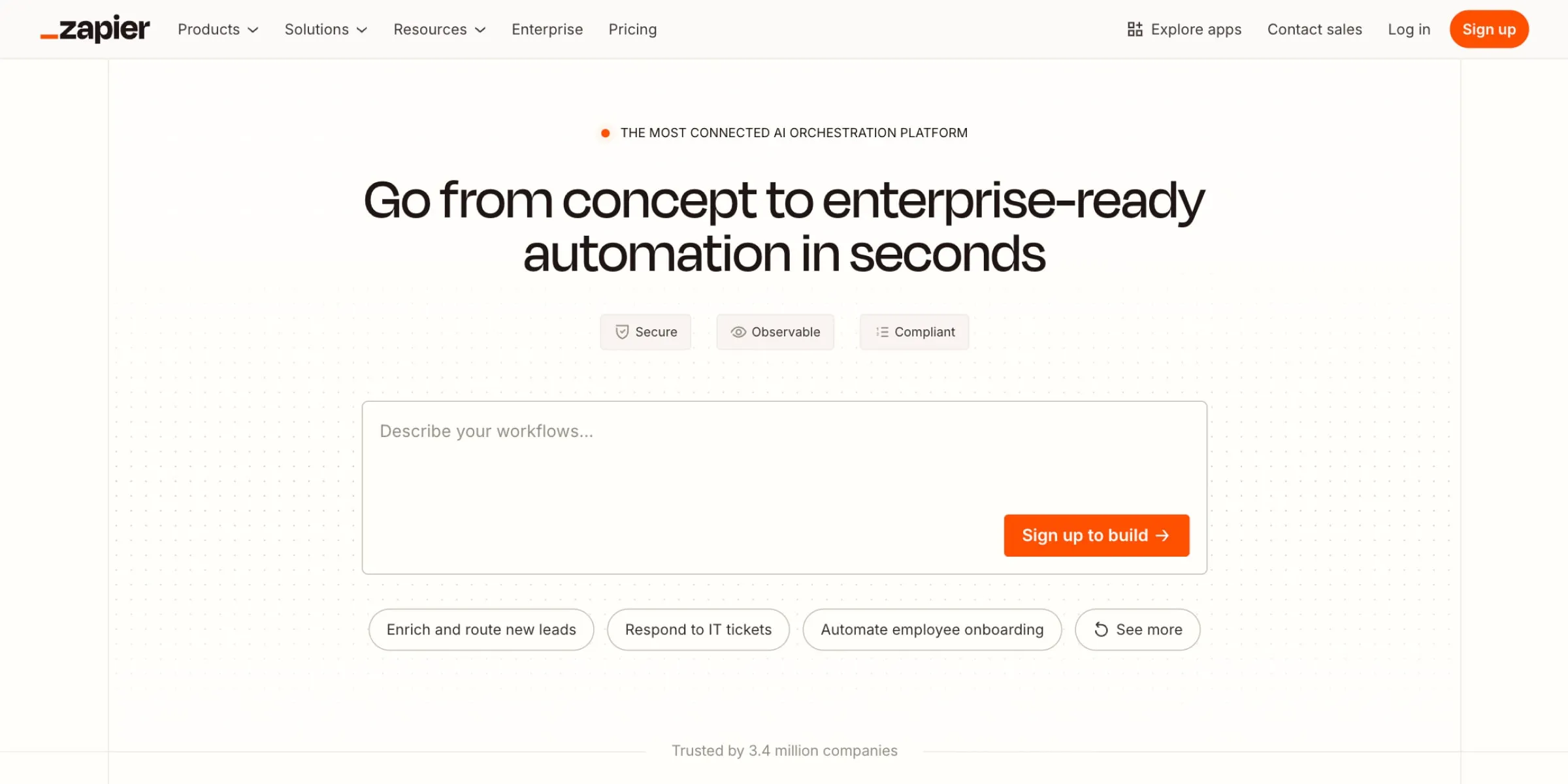
Zapier is the duct tape of the marketing stack. It connects tools that don't natively integrate, automates workflows between apps, and eliminates manual data entry. When someone fills out a form, Zapier can add them to your CRM, start an email sequence, notify your sales team on Slack, and add a row to your tracking spreadsheet.
The real value is in the time saved. If you're manually copying data between tools even once a day, that's 20+ hours a month you could spend on strategy instead. We use Zapier at Aimers to connect our campaign management tools with client reporting systems. The multi-step Zaps can handle surprisingly complex workflows. Start simple (form submission to spreadsheet) and gradually automate more as you get comfortable.
12. Vidyard for Video Marketing
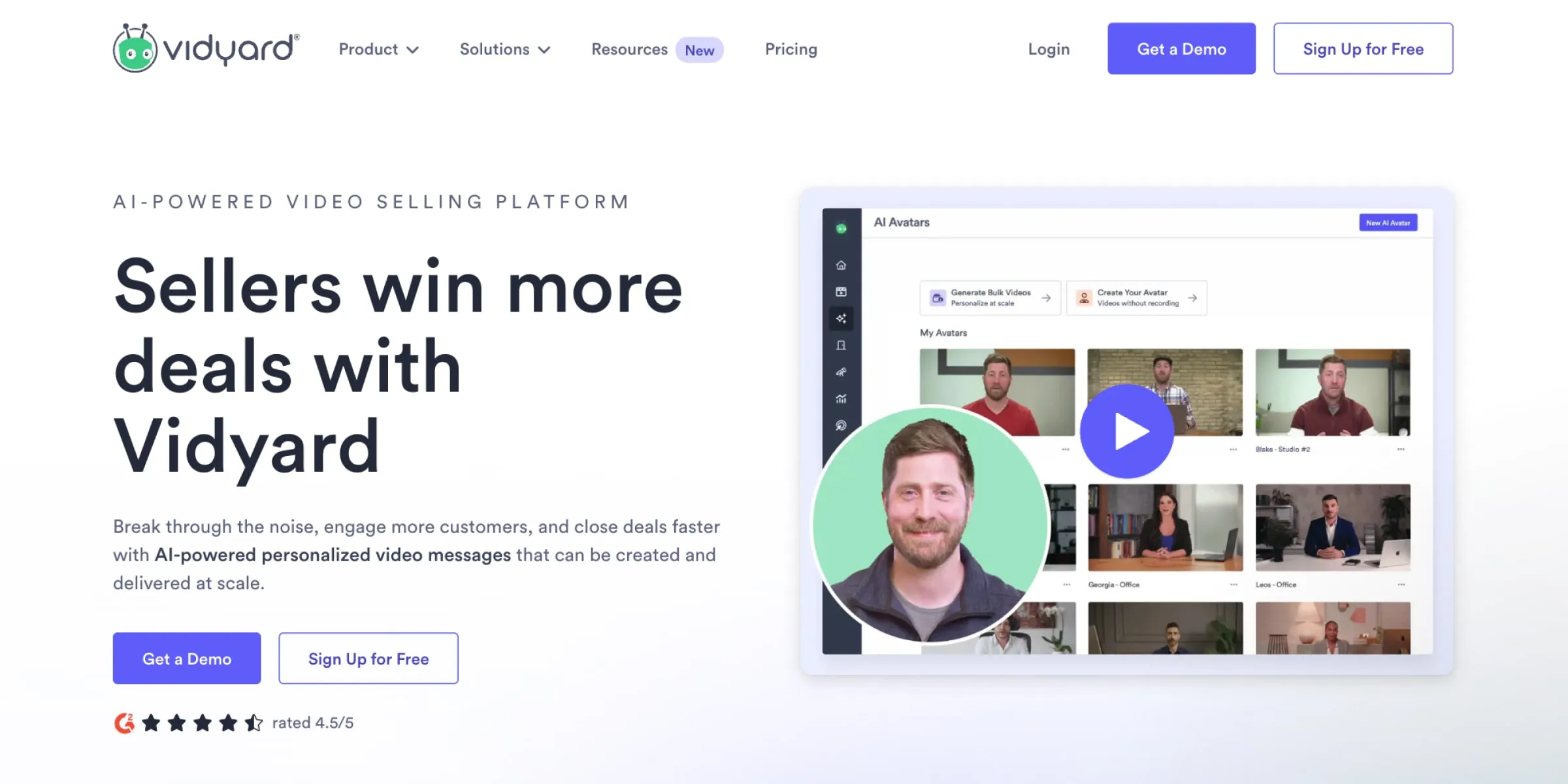
Video is becoming essential for B2B SaaS marketing, and Vidyard makes it manageable. Record product demos, tutorial videos, personalized sales videos. The analytics show you exactly who watched what, how long they watched, and which parts they rewatched (those are the interesting parts to your audience).
The personalized video feature is underrated. Sales reps can record quick personalized intros for prospects, dramatically increasing response rates. For marketing, video landing pages typically convert 2-3x better than text-only pages for SaaS products. Vidyard integrates with HubSpot, Salesforce, and most CRMs so you can see video engagement right in your deal records. If someone watched your 15-minute product demo twice, your sales team should know that.
13. Drift for Conversational Marketing
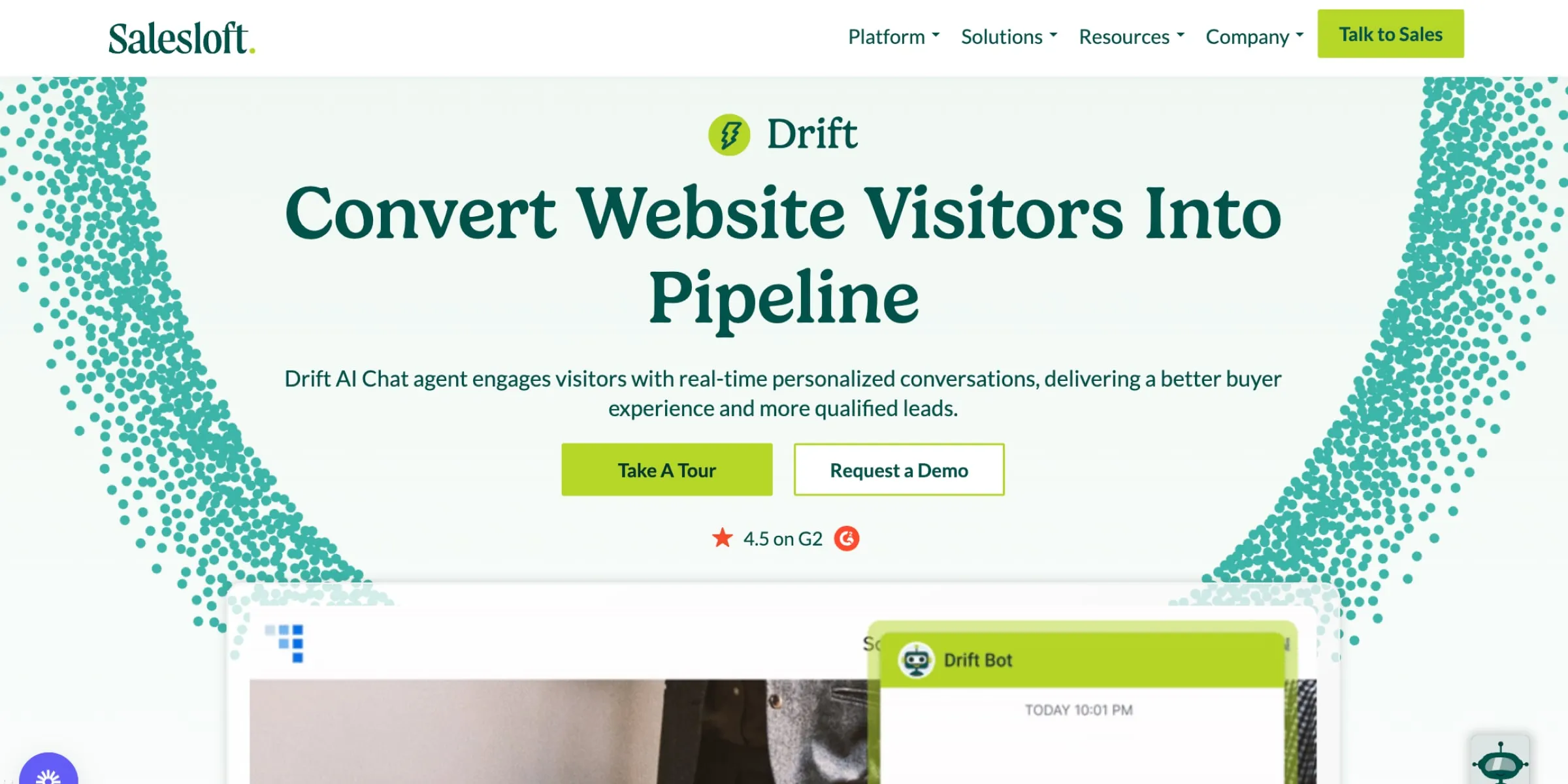
Drift pioneered conversational marketing with chatbots that actually help instead of annoy. For SaaS companies, the qualifying bot can ask visitors questions, understand intent, and route high-value prospects to sales immediately while sending others to helpful resources. This means your sales team talks to better leads and wastes less time on tire-kickers.
The playbooks feature lets you create different conversation flows for different visitor segments. Someone from a fortune 500 company visiting your enterprise page? Different conversation than a startup founder checking out your small business tier. The meeting booking integration is seamless, qualified leads can book time with sales without leaving the conversation. We've seen clients cut their lead response time from hours to minutes with Drift.
14. Supermetrics for Marketing Reporting
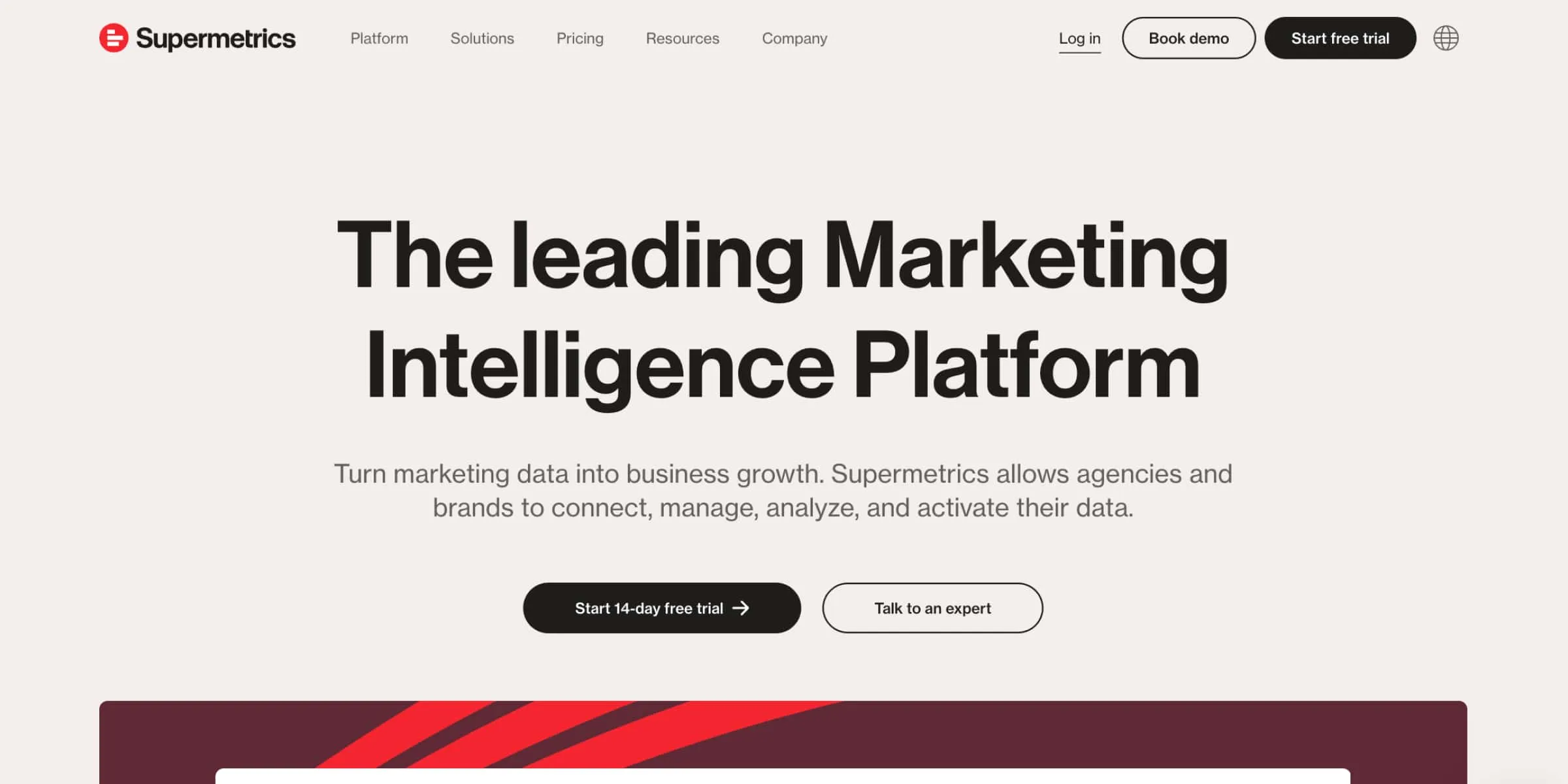
Supermetrics pulls data from all your advertising platforms into one place so you see overall performance without logging into five different platforms every morning. If you're running Google Ads, LinkedIn, Facebook ads, you need this.
The real power is combining data from different sources. See paid search and paid social performance side by side. Compare cost per lead across all channels in one spreadsheet or dashboard. At Aimers, Supermetrics saves us probably 10 hours a week in manual reporting. The automated reports can refresh daily, so your dashboards always show current data. If you're running Google Ads, grab our free Google Ads optimization checklist to make sure your campaigns are set up correctly.
15. Intercom for Customer Communication
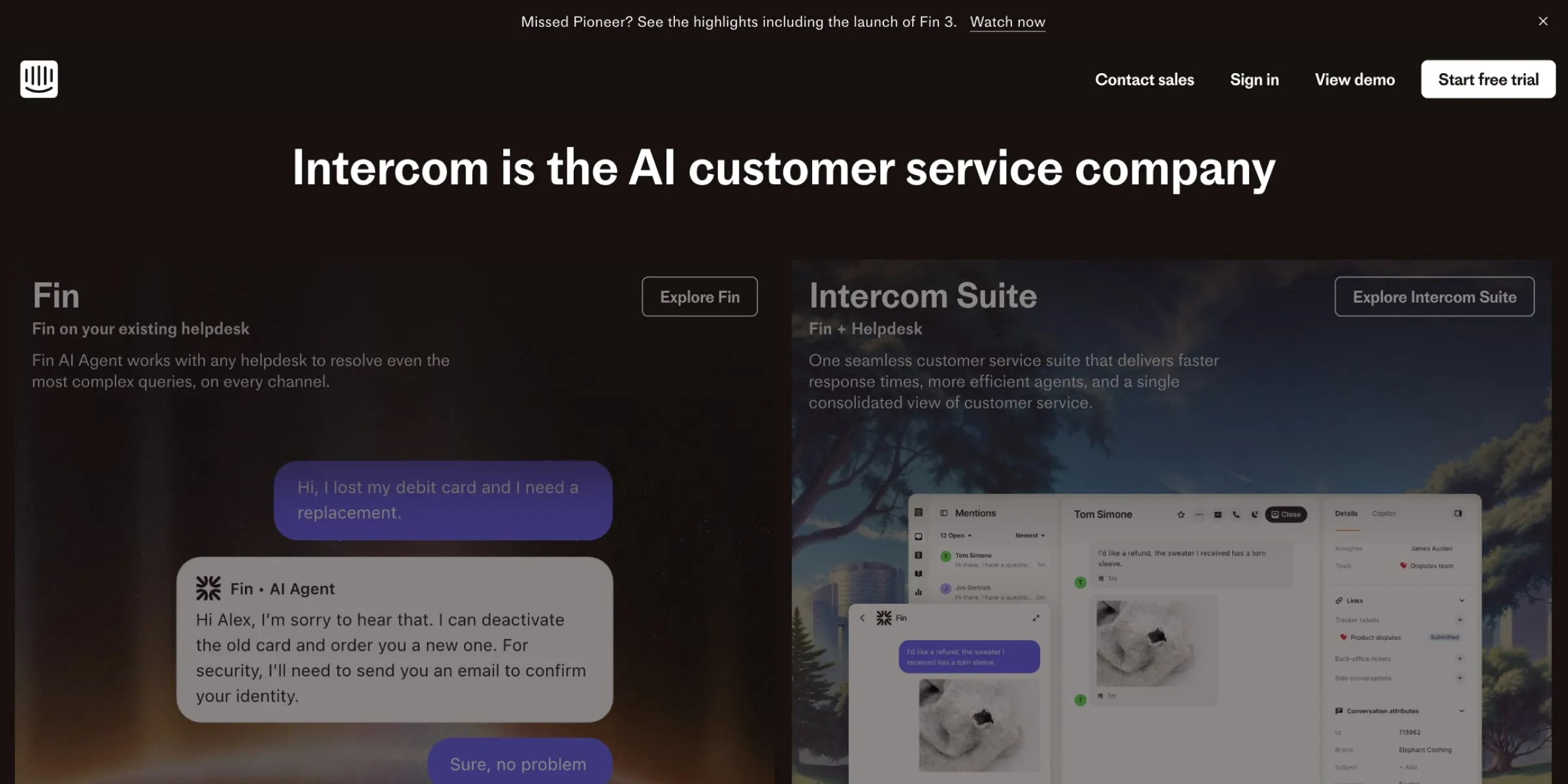
Intercom does double duty as customer support and marketing automation. The Product Tours feature lets you highlight new features and guide users through workflows. The message targeting is sophisticated, send different messages based on user behavior, company attributes, or lifecycle stage.
For product-led growth saas companies, Intercom becomes the primary way you communicate with users at scale. Announce new features, gather feedback, provide support, all from one platform. The Series feature (email-style campaigns but sent through Intercom) works particularly well for onboarding sequences. Users are more likely to see a message in-app than in their overflowing email inbox. The chatbot can handle common questions automatically, freeing up your support team for complex issues.
Building Your Marketing Stack How to Choose the Right SaaS Marketing Tools
Integration matters more than features. A tool that doesn't play nice with your existing stack creates data silos and manual work.
Start with your biggest pain point. Don't try to fix everything at once. Calculate the opportunity cost, if a tool costs $500 monthly but saves 20 hours of work, that's worth it.
If your campaigns aren't performing and you're not sure why, it might be time for an audit. We wrote about the 7 signs you need a PPC audit that can help you figure out if it's the tools or the strategy.
Most tools worth using offer free trials or freemium plans. HubSpot has a generous free CRM. Canva covers most design needs on free. The trap? Sometimes you spend more time working around limitations than you would've spent paying for the tool. Be honest about whether "free" is costing you more in time and frustration.
We've seen too many businesses build Frankenstein stacks where tools overlap, data doesn't sync, and nobody knows why they're paying for half of them.
The landscape in 2025 rewards businesses that move fast, test constantly, and make data-driven decisions. The right tools make that possible.
Companies that invest in the best tools and use them strategically grow faster, acquire customers more efficiently, and scale more predictably. It's about eliminating manual work so you can focus on strategy, creativity, and building customer relationships.
If you're wondering where your ad budget is leaking (or which tools deserve a spot in your stack), book a strategy call with us. We've done this enough times to know what works and what's expensive shelfware.










